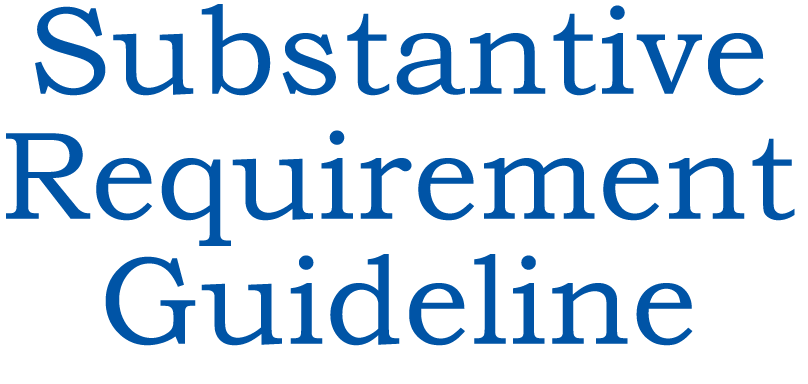Writing Present Levels Of Performance Examples
What is included in the IEP document?
Page 6: High-Quality PLAAFP Statements

Make sure that all of the student's educational needs identified in the evaluation stage are included in the present levels of academic achievement and functional performance section of the IEP.
One of the fundamental components of an IEP, a present levels of academic achievement and functional performance (PLAAFP) statement summarizes the student's current levels of functioning. State and district documentation of this information varies. For example, some PLAAFP statements are written as a single comprehensive summary that covers all areas in which the student needs support; others are written as multiple smaller descriptions that address each area of need separately.
Regardless of the way it is organized, the PLAAFP statement must contain information for each identified area of need based on the results of the student's evaluation (the second step in the IEP process). The PLAAFP statement serves as the foundation from which all other components of the IEP will be built.
At a minimum, the PLAAFP statement must contain information that:
- Describes the student's needs in an academic and/or functional skill area
- States the impact of the student's disability on her involvement in the general education curriculum
- Documents the student's current levels of performance, which will serve as baseline data to measure her subsequent progress
x
baseline data
The measure of the level of a student's academic or behavioral performance before a change (e.g., instructional or behavioral practice or intervention) is implemented. This information can be compared to data collected after the change has been implemented to evaluate student progress.
- Informs the annual goals and the appropriate special education services and supports required to meet those goals
Alphabet Soup

Historically, IEPs contained information about a student's present levels of performance (PLOP), also referred to as present levels of educational performance (PLEP) in some schools or districts. When Congress reauthorized IDEA in 2004, this was changed to the present levels of academic achievement and functional performance (PLAAFP). The new term highlights the need for special education to address all of a student's needs. The addition of functional performance—nonacademic skills necessary for independent living (e.g., behavior, social skills, communication, independent living skills, and mobility)—reflects an awareness that students with disabilities require more than academic supports if they are to meet their individual goals for long-term success.
PLOP: present levels of performance
PLEP: present levels of educational performance
PLAAFP: present levels of academic achievement and functional performance
Legislation and Litigation 
If the IEP fails to assess the 'child's present levels of academic achievement and functional performance' the IEP does not comply with [IDEA]. This deficiency goes to the heart of the IEP; the child's level of academic achievement and functional performance is the foundation on which the IEP must be built. Without a clear identification of [the child's] present levels, the IEP cannot set measurable goals, evaluate the child's progress and determine which educational and related services are needed.
There should be a direct relationship between the present levels of performance and the other components of the IEP. Thus, if the statement describes a problem with the child's reading level and points to a deficiency in reading skills, the problem should be addressed under both goals and specific special education and related services provided to the child.
U.S. Department of Education, Code of Federal Regulation, 1999, Appendix C, Question 36
Developing a High-Quality PLAAFP Statement
The IEP team can begin the process of developing a high-quality PLAAFP statement by holding a discussion that centers around the four elements outlined above: student needs, effect on progress in general education, baseline information, and connection to goals and/or services. By doing so, they will begin to assemble the elements that will become the student's PLAAFP statement. The table below poses some questions that can help guide that conversation.
| PLAAFP Elements | Description | Guiding Questions |
| Student Needs | Information on the student's current academic and/or functional needs | What are:
|
| Effect on Progress in General Education | An explanation of how the disability affects the student's involvement and progress in the general education curriculum | How does the student's disability affect her:
|
| Baseline Information | Baseline data for monitoring student progress | Are the data being reviewed to determine whether the student is making progress:
x specific Clearly stated. x objective Based on observable (e.g., "cursing" or "swearing") rather than subjective (e.g., "being disrespectful") behaviors. x measurable Quantifiable by a defined standard, particularly so that any amount of change can subsequently be identified. And do these data relate to:
|
| Connection to Goals and/or Services | Bridge between the PLAAFP statement and an annual goal | Is there enough information in the PLAAFP to develop a challenging, ambitious, measurable annual goal? Is there enough information in the PLAAFP to determine what special education, related services, accommodations, and program modifications are needed? Note: These are simple "yes" or "no" questions. |
When a student's first IEP is developed, much of the information needed for the PLAAFP is collected in the initial assessment. That information is outdated by the time a student's IEP is ready for an annual review, so school personnel will need to collect data prior to the IEP meeting. In this interview, Tamara McLean shares how personnel at her school collaborate to collect the information and draft PLAAFP statements (time: 1:06).

Transcript: Tamara McLean
In my school when we develop the PLAAFP statements, it's a collaboration of many different people. So if it is an O. T. skill, the O.T. is going to develop the wording, but she will send out an information thing to fill out for the gen ed teacher, for the special ed teacher, on those areas so they can see how it plays out in the classroom versus just their one-on-one setting. The case manager is really only going to develop the areas that they serve. So if a child has an IEP that has math service and it has reading service, the person who delivers the reading service is going to be the person who actually fills in that part of the IEP. But they're going to reach out to the reading teacher as well and get information for how that plays out in the general education classroom. Really, it is a collaboration for all areas because whether it's pre-vocational, whether it's social-emotional, whether it's math, whether it's reading, it's not just going to be one person who has information on that.
After the IEP team has discussed the information above, they can begin to write the PLAAFP statement. As they do so, they should keep in mind that this statement should be written in concise, specific, and clear language that can be easily understood by all members of the IEP team. It should not merely identify the student's disability and list the various assessment scores, but instead should provide enough information to inform the development of the student's annual goals. The table below contains portions of one student's PLAAFP statement that relate to his reading skills and shows how each element is addressed.
| Element | Example |
| Student Needs | K is a 9-year-old, 4th-grade student who is eligible for special education services under the category of Specific Learning Disability. K has strong expressive and receptive language skills and a large vocabulary. As a result, he actively engages in class discussions and performs well on tasks that require auditory comprehension (e.g., following multi-step directions, answering comprehension questions about class discussions or about passages that are read to him). His strong communication skills have also earned him the friendship and respect of his peers, many of whom look to K as a class leader. K's learning disability negatively affects his decoding skills, which are at a low 2nd-grade level. His broad reading scores on standardized tests are:
x grade equivalent score A number that compares the student's performance to a typical student performance at a particular grade level. For example, a 4th-grade student who obtains a grade equivalent score of 2.2 on a reading test is performing at a level equivalent to a typical student at the end of the second month of 2nd-grade. x national percentile rank A number or score that describes a student's performance in comparison to a nationwide sample of students in the same grade. For example, a 4th-grade student with a percentile rank of 27 has received a score that is higher than 27% of 4th-grade students nationwide; this student's score can also be referred to as being "at the 27th percentile." In addition to school-based concerns, K's parents worry about the effects of his learning disability outside of school. For example, K avoids games that involve even a little bit of reading, resulting in some conflicts during weekly family game nights, which often involve board games. When the family eats out, K prefers one restaurant whose menu he has memorized and protests if a new restaurant is selected due to anxiety about reading an unfamiliar menu. |
| Effect on Progress in General Education | The 4th-grade curriculum involves many independent reading activities. K's decoding problems affect his performance in the general education setting because he cannot independently read items like written instructions, worksheets, or content area texts. He is self-conscious about his reading difficulties and works hard to hide his reading struggles from his classmates. As a result, he is unwilling to utilize text-to-speech technologies on his tablet, even with headphones, or partner with a peer reader. |
| Baseline Information | K is currently reading 54 words correct per minute (wpm) on a 2nd-grade reading probe, which is slightly higher than the 2nd-grade fall benchmark of 50 wpm. The 4th-grade fall benchmark is 95 wpm on a 4th-grade reading probe. |
| Connection to Goals and/or Services | Yes, there is enough information to determine annual goals and/or services and supports. |
Did You Know?
For preschool children, the part of the statement describing how the disability affects involvement and progress in the general education curriculum is different. In their case, that portion of the statement describes how the child's disability affects her participation in appropriate activities.

This toolbox describes additional resources related to the information presented on this page. These resources are provided for informational purposes only for those who wish to learn more about the topic(s). It is not necessary for those working through this module to read or refer to all of these additional resources to understand the content.
- Defining Behavior
This IRIS Case Study describes how to clearly define a student's behavior so that when they occur they can be reliably identified, measured, or counted. It goes deeper into the methods needed to collect baseline data and then determine whether the student has made progress.
Present Levels of Academic Achievement & Functional Performance (PLAAFPs)
Present Levels of Academic Achievement and Functional Performance (PLAAFP) Statements
Both of the Kansas SDE documents above explain each of the elements within a high-quality PLAAFP statement. The first lists additional considerations for infants and toddlers, behavior, severe disabilities, and secondary transition-related issues. The second introduces the connection between the PLAAFP statements and the annual goals, with examples.
Present Levels
This Center for Parent Information & Resources (CPIR) document provides additional detail on both academic and functional skills, as well as examples across a wide range of skill areas.
![]()
Writing Present Levels Of Performance Examples
Source: https://iris.peabody.vanderbilt.edu/module/iep01/cresource/q3/p06/
Posted by: spencernoblat1959.blogspot.com

0 Response to "Writing Present Levels Of Performance Examples"
Post a Comment